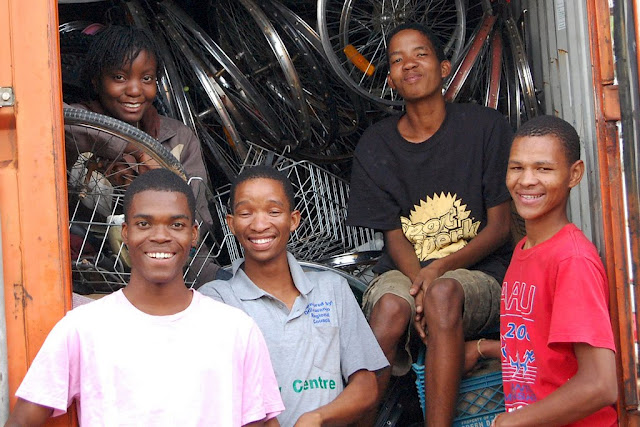The good news: By 2030 the number of people living in extreme poverty will be reduced by half.
The bad news: Those that remain will increasingly be concentrated in fragile and post-conflict situations. Nearly half of the world’s extreme poor will be living in fragile and conflict situations by 2030.
That makes the roughly 40 fragile and/or conflict-affected states, or FCAS in development jargon, the key to ending extreme poverty and reaching Sustainable Development Goal No. 1: End poverty in all its forms everywhere.

Figure 1: Historical and projected global population living in extreme poverty (millions of people)
Investments of private capital, which can play an important role in such countries, are hampered by higher risks for which investors are not rewarded, according to anecdotal and empirical evidence.
Those risks include missing supportive infrastructure (e.g., energy, transport, water), which hinders the movement of products or services along value chains and decrease productivity, resulting in lower returns on investments. At the firm level, opaque governance results in investors’ and entrepreneurs’ mistrust. Limited market intelligence raises due-diligence costs for investors and leaves entrepreneurs struggling to comprehend foreign financing alternatives.
The difficulty in pricing and sharing country-specific risks, such as unpredictable natural disasters and civil and political conflicts, leads to an absence of co-lenders.

Figure 2: Barriers that push away funders from investing in FCAS, roles that blended finance can play, and the toolkit at donors’ and investors’ disposal for overcoming those barriers
Blended finance can play a key role in bridging the risk-reward gap in these fragile and post-conflict states. Blended finance is the strategic use of concessionary funding to mobilize private capital. By transferring risk, and lowering the cost of investment, blended finance helps to get projects off the ground that would not have been funded otherwise.
- Investors or donors can directly fund high-risk projects through early equity or flexible debt investments and grants.
- They can create incentives by using guarantees for marketplace development.
- They can mitigate risk by designing financing facilities that consider longer-term flexibility and currency risk.
- And donors or investors can include technical assistance in their transactions to support and build local capacity.
The examples below illustrate how these tools have been used in practice.
Direct funding + incentives + technical assistance
Rikweda Fruit Process Co. Earlier this year, members of the World Bank Group agreed to support the development of a greenfield raisin processing facility with Rikweda Fruit Process Company. The International Finance Corp. is planning to invest $3 million and the Multilateral Investment Guarantee Agency is providing insurance against risks from war and civil disturbance of up to $7.8 million.
Under another existing World Bank project, $190 million will be provided to help improve farmers’ agricultural practices, introduce new technologies, and connect farmers to markets. The project expects to double Afghanistan raisin production levels, increase selling prices by up to 20%, generate $22 million in export revenues, improve the livelihoods of 3,000 smallholder farmers, and eliminate up to 3,000 tons of carbon dioxide emissions per year once the facility is at full capacity.
How business support helps emerging-market enterprises reach lower-income customers
Risk mitigation + technical assistance + incentives
Prosper Africa. Earlier this year Dalberg conducted a financial benchmarking analysis of the Council on Smallholder Agricultural Finance members’ portfolios, which informed the design of Prosper Africa (See, “Financing for smallholder farmers has high impact and low margins). Prosper Africa’s proposed structure includes a multi-solution approach: a facility to provide first loss coverage, an incentives payments mechanism, support for innovative business models, a data and learning platform to build industry knowledge, and a technical assistance facility. The TA facility aims to strengthen management capacity of prospective borrowers by subsidizing the cost of support. To date, CSAF members have made about 180 loans in fragile and post-conflict countries.
Risk mitigation + technical assistance + guarantees
Kosovo’s renewable energy sector. Dalberg Advisors last year helped the Millennium Challenge Corporation identify barriers to private investment in renewable energy power projects in Kosovo. The Dalberg team recommended creating a joint financing and technical assistance facility to address the perception of high risk due to the early stage of sector development, the lack of experience at local banks in offering project finance for energy projects and the low levels of trust among stakeholder. The financing facility could potentially unlock capital for bankable projects through guarantees, debt, and other instruments. The technical facility aims to build a pipeline of bankable projects through capacity-building for local banks, developers, and regulators.
Ending poverty
In emerging markets, up to 90% of all jobs are created by the private sector, studies show. That number could be higher in fragile and post-conflict states. In the Democratic Republic of the Congo and Afghanistan, 97% and 95% of employment comes from the private sector. Anecdotal evidence indicates that many civil servants have “side hustles” and run private businesses in addition to fulfilling official functions.
Many fragile and post-conflict states lack unemployment benefits or insurance programs; being unemployed in these situations is a matter of life or death. In crises such as natural disasters or civil conflict, private capital can help restore transport, energy, and telecommunications infrastructure as well as help households get back on their feet through income generation from jobs.
Using the approaches and tools described above, blended finance has the potential to help reduce extreme poverty in fragile and post-conflict situations. Successful financing will require actors to build a local presence and understand the history and dynamics of each local context.
They must also be willing to commit for the long haul and accept financial risks, in order to effectively blend financing to reach Sustainable Development Goal No. 1 of ending extreme poverty by 2030.
Kusi Hornberger is an associate partner at Dalberg Advisors and Maria Camila Saad is a senior consultant at the consulting firm.











